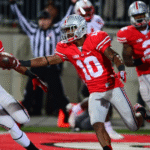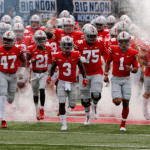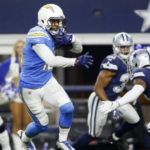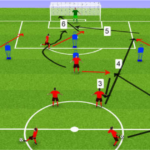Football can look chaotic to a newcomer — players running in different directions, numbers being yelled, and strange hand signals from the sidelines. But underneath the action lies a well-planned system of football plays. Learning how to read football plays is the key to understanding the game like a coach or quarterback.
This guide will break down the basics step-by-step so you can follow the action, understand the strategy, and even predict what might happen next.
Why Learning to Read Football Plays Matters
Understanding football plays isn’t just for players. Fans who know how to read plays can:
- Predict the next move before it happens
- Spot clever strategies and trick plays
- Appreciate the skill of quarterbacks and coaches
- Enjoy the game on a deeper level
Whether you’re a player, a coach, or just a passionate fan, reading football plays will transform your football experience.
Step 1: Learn the Basic Football Play Structure
Every football play has a structure. It’s usually written in a short, coded format that looks confusing at first.
Key elements of a football play:
- Formation – How players are lined up before the snap
- Motion – A player moving before the snap to create confusion or better positioning
- Snap Count – When the ball will be snapped
- Assignment – What each player will do (block, run a route, carry the ball, etc.)
Example: “I-Formation Right, 26 Power”
- I-Formation Right = Offensive formation
- 26 = Hole number and ball carrier
- Power = Type of run play
Step 2: Understand Offensive Formations
Formations are the blueprint of football plays. They tell you how the offense is set up.
Common formations:
- I-Formation – One fullback and one running back behind the quarterback
- Shotgun Formation – Quarterback lines up several yards behind the center
- Spread Formation – Multiple wide receivers to stretch the defense
Tip: Once you can recognize formations, you’ll start to guess what type of play might be coming.
Step 3: Learn the Number System for Running Plays
Running plays often use a hole numbering system to identify where the ball will go.
- Odd numbers usually mean runs to the left
- Even numbers usually mean runs to the right
Example: 26 Power
- 2 = Running back position
- 6 = Hole on the right side
- Power = Strong, physical run
Step 4: Master Passing Route Concepts
Passing plays are based on route combinations — the paths receivers run to get open.
Common passing routes:
- Slant – Quick diagonal route
- Post – Angled toward the goal post
- Go/Fly – Straight down the field
- Out/In – Short and sharp toward or away from the sideline
Pro Tip: Defenses often react based on the first steps of the receiver. Watch their initial movement to anticipate the play.
Step 5: Learn to Spot Defensive Alignments
Reading football plays also means recognizing what the defense is doing.
Common defensive formations:
- 4-3 Defense – Four linemen, three linebackers
- 3-4 Defense – Three linemen, four linebackers
- Nickel Defense – Five defensive backs for pass coverage
If you see extra defensive backs on the field, it usually means the defense expects a pass.
Step 6: Watch for Pre-Snap Clues
Quarterbacks often use audibles — changing the play at the line of scrimmage after reading the defense.
Look for:
- Pointing or shouting signals
- A player shifting positions
- Changes in the quarterback’s tone or rhythm
These are hints that the offense is adjusting its play.
Step 7: Break Down the Play After the Snap
To truly master how to read football plays, watch each step after the snap:
- See where the offensive line blocks — inside or outside
- Watch the quarterback’s drop (short = quick pass, long = deep pass)
- Follow the ball carrier or primary receiver
- Notice how the defense reacts
Over time, you’ll start recognizing patterns and predicting outcomes.
Tips for Learning Faster
- Watch replay videos and slow-motion highlights
- Use a playbook diagram to visualize formations and routes
- Attend live games to see real-time adjustments
- Practice with Madden NFL video games to simulate play-calling
Common Mistakes When Reading Football Plays
- Only watching the ball instead of the whole field
- Ignoring the offensive line’s movement
- Not recognizing defensive coverage
- Forgetting about motion and formation changes
FAQs on How to Read Football Plays
Q1: Can a beginner really learn how to read football plays?
Yes! Start with formations, then learn routes and running lanes. You’ll improve with practice.
Q2: Do NFL and college teams use the same play codes?
Not exactly. The structure is similar, but terminology can vary by team.
Q3: How long does it take to learn to read plays?
With consistent watching and practice, you can understand the basics in a few weeks.
Q4: Is it necessary to memorize an entire playbook?
For fans, no. For players, yes — it’s essential.
Q5: What’s the fastest way to recognize a play?
Learn common formations and watch the offensive line’s first movement.
Conclusion
Learning how to read football plays takes patience, observation, and practice. Start with the basics — formations, routes, and run numbering — and then add defensive reading skills. The more games you watch, the more you’ll see patterns and strategies unfold before your eyes.










